When most people think of Cairo or Egypt, the first thing that comes to mind is the obvious: the Pyramids & Ancient Egypt.
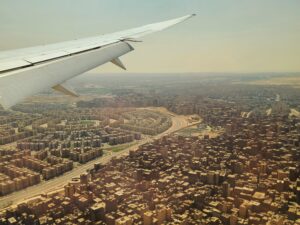
That’s fair. The Pyramids are some of the most iconic and well-known landmarks on Earth, the last remaining member of the Seven Wonders of the Ancient World. This Wonder also lays claim to the distinction of being the largest and tallest man-made structures on Earth for THOUSANDS of years. That is worthy of distinction.
Ancient Egypt is fascinating. It’s mysterious. And, still today, it’s extremely famous.
But the Pyramids are in Giza, not Cairo, on the opposite (far) side of Giza from Cairo. They’re on the outskirts of the adjacent city. We’ll get to Giza, the Pyramids and all of the fun stuff of Ancient Egypt soon. However, what may appear close on a map is a different story when the distance is separated by miles and miles of megacity.
And that is THE first impression I had of Cairo when the plane began to descend: this is truly a megacity! The view of the expansive urban area from my window seat aboard North America’s worst airline (Air Canada is my “never again” airline, by the way) kept going and going. The city below was not like flying into London, Amsterdam or Dallas. No slow sprawl here, where property size and distance between neighbors gradually lessens and eventually disappears the closer you get to the city center. No, I did not see much of that.
Instead, it appears that the world below abruptly transforms. Desert sands – we’re talking hundreds of miles, perhaps thousands, that is essentially total emptiness – this almost immediately gives way to jam-packed urban agglomeration as far as you can see.
There is a literal line in the sand, like a fence. One side is sand and harsh desert. On the other side, lush green fields.

I’ve seen images of Cairo from above. I’ve seen satellite photos and photos of the illuminated city at night. For some reason, though, this sudden transition from nothing to megacity didn’t quite sink in until I saw it in person. And then there’s the greenery of the Nile River Delta in the area. Again, the instantaneous transition from inhospitable wasteland to lush, green farmland is obvious.
My fascination only increased. Geography is enthralling for some of us. The relationship between humans and the physical world around them, how they change and interact with it, is truly something I never tire of studying. Few places are like Egypt where one can witness this spectacular relationship in action. Cairo is the epicenter of this stark contrast between complete natural desolation and maximum human liveliness.
Cairo International Airport
When the plane finally touched down, we taxied for about 15 minutes before reaching our gate. It was mid-day, but there were few other planes to be seen traversing the runways.
When we finally deboarded, we followed the crowd. Cairo International Airport has some gigantic airport terminals. For what felt like 20-30 minutes, we walked past empty gate after empty gate.
“Where is everyone?,” I thought. It was strange. Huge airport, hundreds of gates – no people. I don’t recall seeing anyone waiting for a flight at any gate, though. Other than our fellow passengers, it was quiet and empty.
There isn’t much to report about the terminal. It was pretty boring and outdated. I thought this might have just been that one endless terminal, but my thoughts were proven correct on second and third visits to Cairo International Airport.

In all fairness, the airport is fine. It’s clean. But for a city of this size with this many foreign travelers passing through, I expected something nicer and newer.
Anyway, that’s the interior of the airport. It’s rather boring. I should point out that it also felt secure. Security/police are visibly present, and there are a lot of cameras, too. Every direction I turned, more security cameras watching. I felt totally safe. Customs and immigration was easy, fast and no hassle whatsoever.
Upon exiting, that’s when you finally get the first feeling that you are in Egypt. The moment you step out the doors, taxi drivers are by your side, vying for business. This can be stressful, especially after a 12-hour flight from the other side of the world deposits you into a foreign country.
My suggestion when traveling to countries where certain proprietors don’t know how to civilly communicate with others is to arrange a ride beforehand. You can do this through your hotel, with rideshare apps (i.e. Uber or Grab) or with online tour operators.
Roughly 36 hours after leaving my front door, I would rather arrange a ride and spend a few dollars more than be harassed by a horde of drivers, haggle on a price, navigate a language barrier and possibly be scammed. At the very least, that can wait until I’ve had a nap.
Cairo Highways
The streets of Cairo remind me of a toned-down version of the streets found in big cities of Southeast Asia. It’s on the chaotic side – and there is certainly the occasional moment you think may be your last – but it’s mostly just busy.
The scene from the airport to Downtown Cairo was a mix of surprise and pity. In a matter of moments, you go from looking at fancy buildings, and, before you have time to process the unexpected sheen, massive slums occupy your entire field of view.
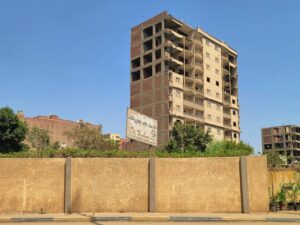
This is only a highway view, merely a tiny glimpse into an enormous place. That’s something I think is important to remember. There are certainly crappy cities all over the world, but I try not to judge any of them as viewed from a highway or train.
Rolling into Downtown Cairo, it was a strange sight. The architecture is hard to read. There are rows of ugly blocks, the occasional modern structure and a lot of Parisian-esque buildings in the mix. I was reminded of central Baku, surprisingly European buildings but slightly more neglected here. My guess is that, at one point, there were more of these beautiful, European-style buildings that have been cheaply replaced over the decades.

I liked it, though. Cairo’s center is a fun area. It’s busy. There are streets and alleys hiding where you don’t expect. The smells were just what I anticipated. Overall, the actual city of Cairo seemed like a pretty cool place that I was looking forward to exploring.
After the Nap
The nap happened. It had to. We did our best to stay awake. Naturally, we failed. The slumber was short-lived, and we managed to get out and see some of Cairo on foot, spending a healthy amount of the afternoon and evening wandering and absorbing the surrounding megacity.

Crossing busy streets isn’t as bad as Vietnam, where traffic lights and crosswalks serve as nothing more than decoration. But few places can compare to playing real-life Frogger in Hanoi.
Cairo’s streets still require heightened senses and a certain amount of courage.
The famous Tahrir Square, for example, is a giant roundabout in the middle of Downtown Cairo. Crossing the smaller streets that lead into the roundabout can be stressful. My suggestion is to take it slowly and attempt to make eye contact with oncoming traffic. If you’re with someone, stay close or hold hands. Whatever you do, DO NOT dart out and try to beat the traffic. That’s a great recipe for pain.
It might seem trivial, but I enjoy the insignificant challenges we face when visiting a new country. Like figuring out how to cross the street. It’s stressful in the moment – sure, sometimes it’s downright aggravating when it feels like no one cares about the pedestrian – but it’s kind of fun, too.
The City Comes Alive at Night
Cairo is certainly a busy city during the daytime. You wouldn’t expect much else in an urban area packed with tens of millions of people. The busyness of daytime, however, often pales in comparison to night.
When the sun starts to go down, the temperatures also drop. And the relief from sweltering midday temperatures brings the streets of Cairo to life.
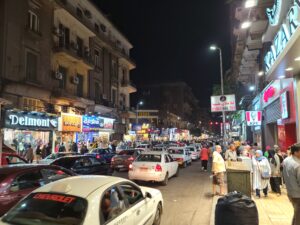
You can easily find busy museums, cafes and roadways during the heat of the day (especially places with good air conditioning), but the good kind of busy and chaos is reserved for the evening. Local chaos. This goes double for weekends. Sidewalks are absolutely bustling. Shops are all-hands-on-deck. Parks (the few that I saw) were the gathering place. Restaurants and cafes were packed and spilling out into the street.
With the occasional exception, I’m normally not one to embrace the chaos of crowds like this, but Cairo at night is exciting. Perhaps I was also energized by the cooler air, but I’m inclined to think it is more likely that I was excited by all of the food.

Evening and night is the best time to search for food in Cairo. There are more restaurants open. Street food appears out of nowhere. It’s easy to determine the good spots, too, based solely on the locals crowding around certain establishments.
One of the interesting things about the night in Cairo is how safe I felt. Despite the surrounding chaos, I felt significantly less bothered. Tourists are frequently pestered and harassed by vendors and touts in Cairo. “Relentless” is a common descriptor for these individuals.
I would like to think that I blended in with the crowds at night, but who am I kidding? I’m a white guy who’s bigger and taller than pretty much everyone else around me. Blending in isn’t something I can do well anywhere, especially places like Cairo.
Instead, I think people simply weren’t bothered as much. They were out enjoying their own lives and largely paid no attention to the two Westerners strolling past. Even in parts of Cairo where we did not see any other tourists, the feeling was the same. Worry-free and unbothered, we enjoyed the wandering through Cairo.
This is why I loved strolling through Cairo at night. Especially the downtown area. If you can do this with a local or fun guide, this would be even better. The only real challenge is navigating the language barrier and knowing exactly where to eat (or not eat). Local assistance would be hugely beneficial.
The People of Cairo
We spent the first portion of our trip in a hostel in Downtown Cairo. This was not a tourist area and no other hotels were nearby. Well, there was one, but it looked like a time capsule from the 1920s. Unfortunately, it was closed or something – we weren’t allowed inside. Tourists were found around the museums; otherwise, we saw only a handful of other Westerners or conspicuous tourists in the area over the course of a few days. Away from the Egyptian Museum, even the famous Tahrir Square (shown below) was largely devoid of tourists.

The people of Cairo, in my personal experience, are friendly. A vast majority of them truly could not care any less that a tourist was in their neighborhood. The primary difficulty was the language barrier. The average Egyptian – that is, one who doesn’t have regular interaction with tourists – does not speak any English at all. I don’t mind that. It’s their country. But it does present a challenge, so perhaps that is the reason locals seemed indifferent to our presence.
If you come across someone who does speak English, you will quickly find out. You will either have gained a new best friend or have to shoo away a persistent sales pitch.
My first impressions of Cairo can be likened to an urban rollercoaster. There were moments of surprise, awe, pity, curiosity and reflection. There is obvious wealth and glaring poverty. Modern architecture sits adjacent to old and ancient. Christian next to Muslim.

The city is huge. That cannot be understated. My perspective is a tiny glimpse into the few areas we saw, though we did see a healthy variety.
One thing I can confidently say is that there is far more to Cairo than being the city near the Pyramids. I would be happy to return to Egypt’s megalopolis with the sole intention of exploring and wandering the streets as they are today. No museums or ancient sites, just Cairo.









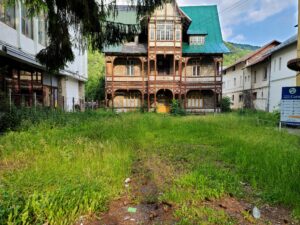





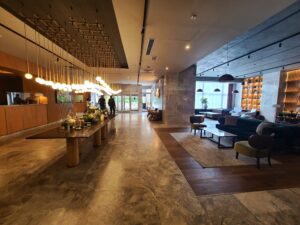
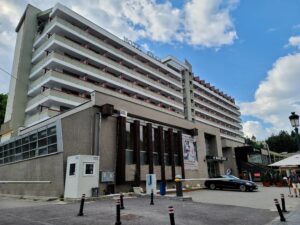



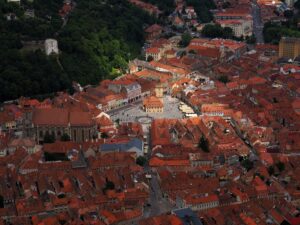
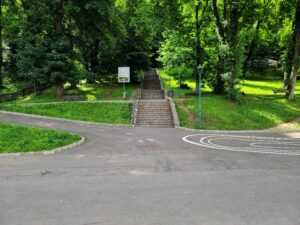




















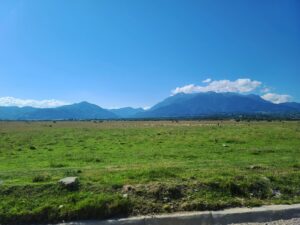
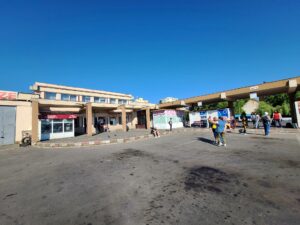


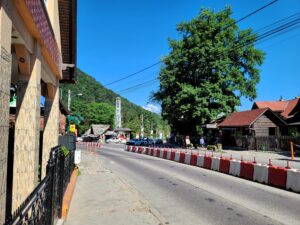
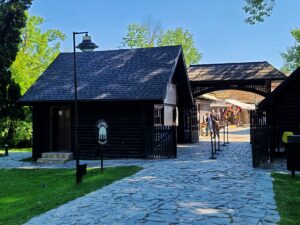
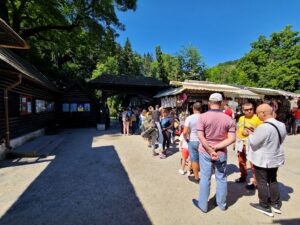




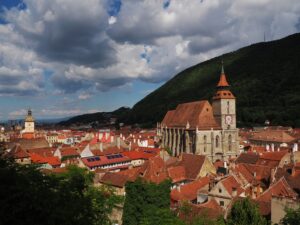
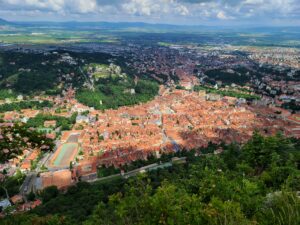
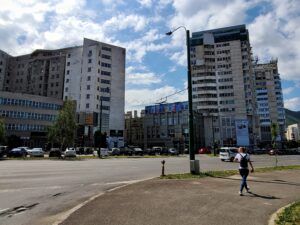
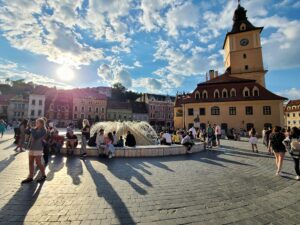



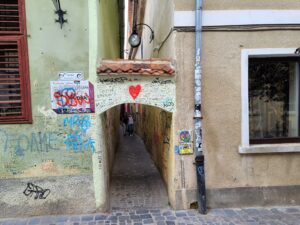
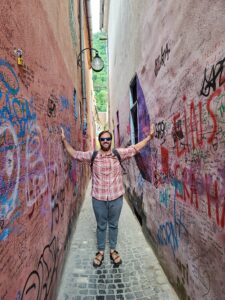
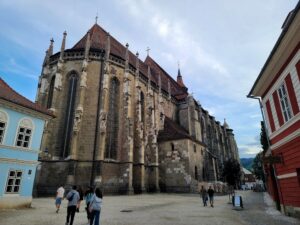
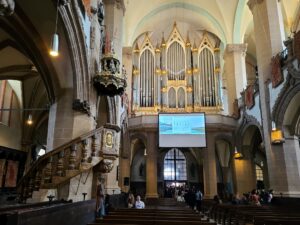

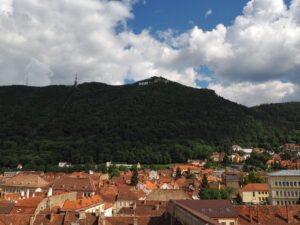
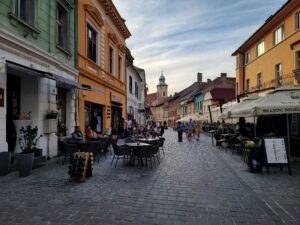
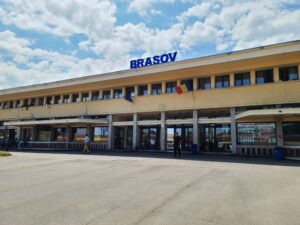
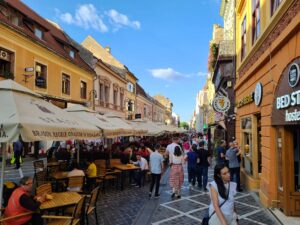
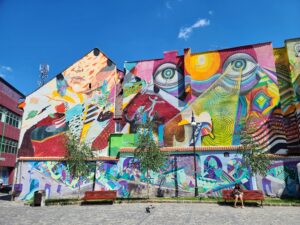
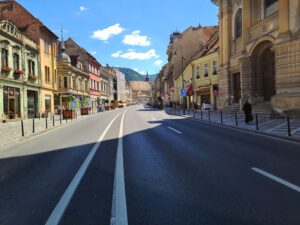
You must be logged in to post a comment.